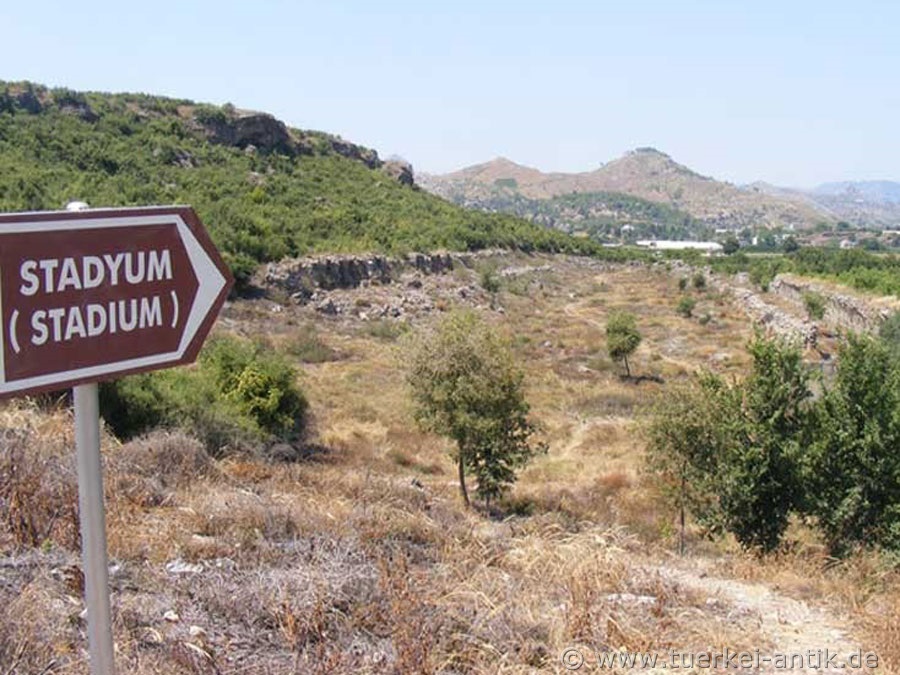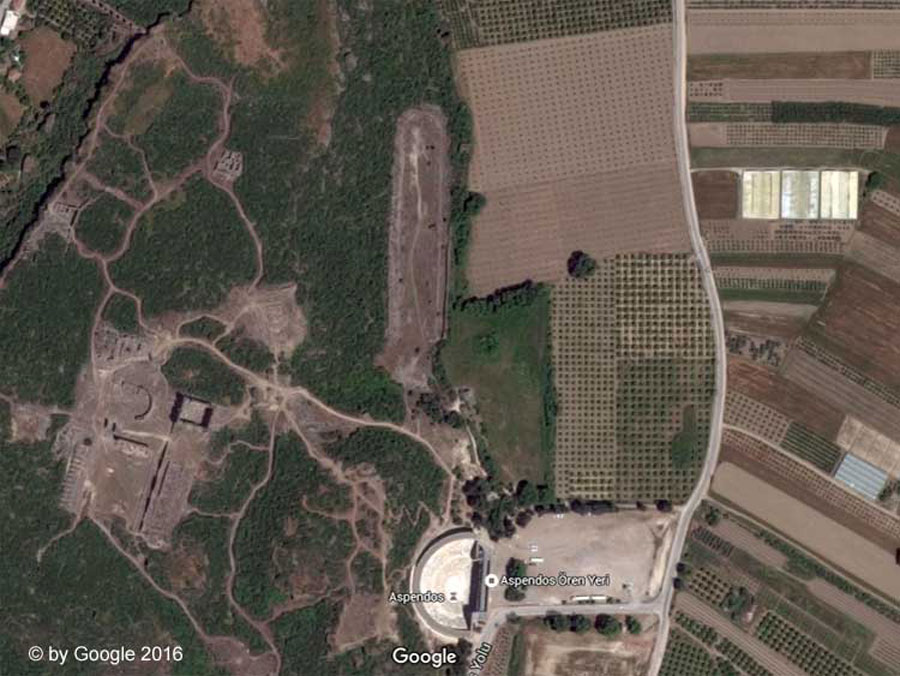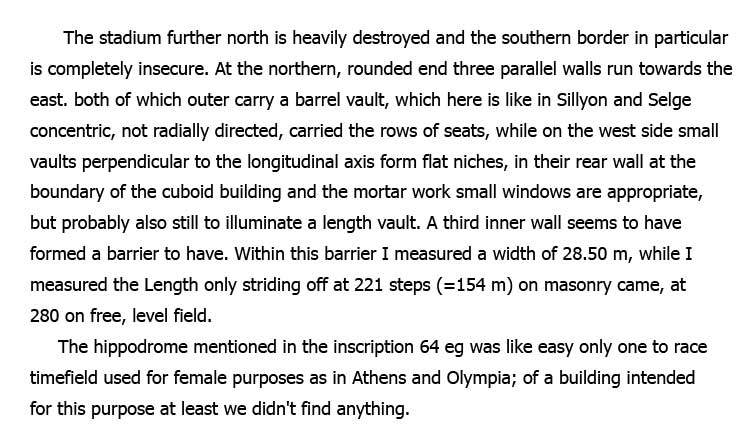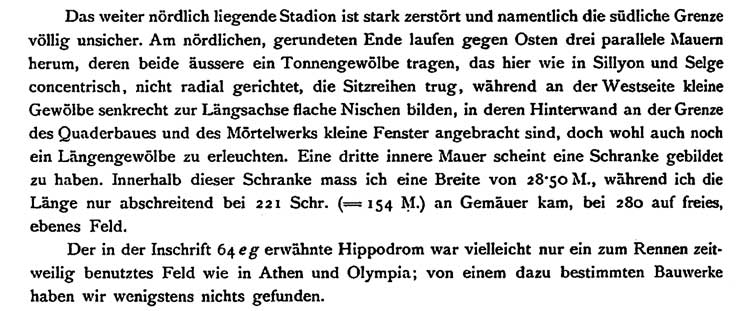 |
|
Ancient stadiums in Turkey Aspendos |
||||||||||||
 |
|
|||||||||||
|
||||||||||||
|
Parts of the grandstands and the shops are still visible. The best preserved part can be found on the northwestern side of the hill. The Austrian explorer Karl Graf Lanckoroński wrote already in 1890 in his book "Städte Pamphyliens und Pisidiens" about the stadium of Aspendos: |
||||||||||||
|
|
||||||||||||
|
|
||||||||||||
| The Original | ||||||||||||
|
|
||||||||||||
| Nothing has changed much about these statements to this day. | ||||||||||||
| The history of Aspendos: | ||||||||||||
|
According to Greek tradition, Aspendos was founded around the 12th century BC by settlers from the Peloponnesian Argos. The legendary seer Mopsos, who was also revered by cities such as Perge as the city father, was considered one of the founders.
Little is known about their Greek history - excavations can certainly bring more knowledge about the pre-Roman epoch in the future. The Battle of Eurymedon is literarily documented. As a port city, Aspendos was formerly connected to the sea by the Eurymedon River (now Köprü Çayı) and thus achieved lasting prosperity. In the last battle of the Persian Wars, the Athenian general and fleet commander Kimon defeated the Persians there in a double battle on land and sea in 466 BC. Since then Eurymedon politically marked the separation of the spheres between the eastern Persian sphere of influence and the Greek Asia Minor in the west. In the Byzantine period the city was called Primoupolis for a time. Aspendos was the seat of a bishop; the titular bishopric of Aspendos of the Roman Catholic Church goes back to the bishopric. |
||||||||||||
 |
||||||||||||
 |
||||||||||||
| Photos: @chim, Google | ||||||||||||
| Translation aid: www.DeepL.com/Translator | ||||||||||||
| Source: Wikipedia and others | ||||||||||||
|
|
||||||||||||



